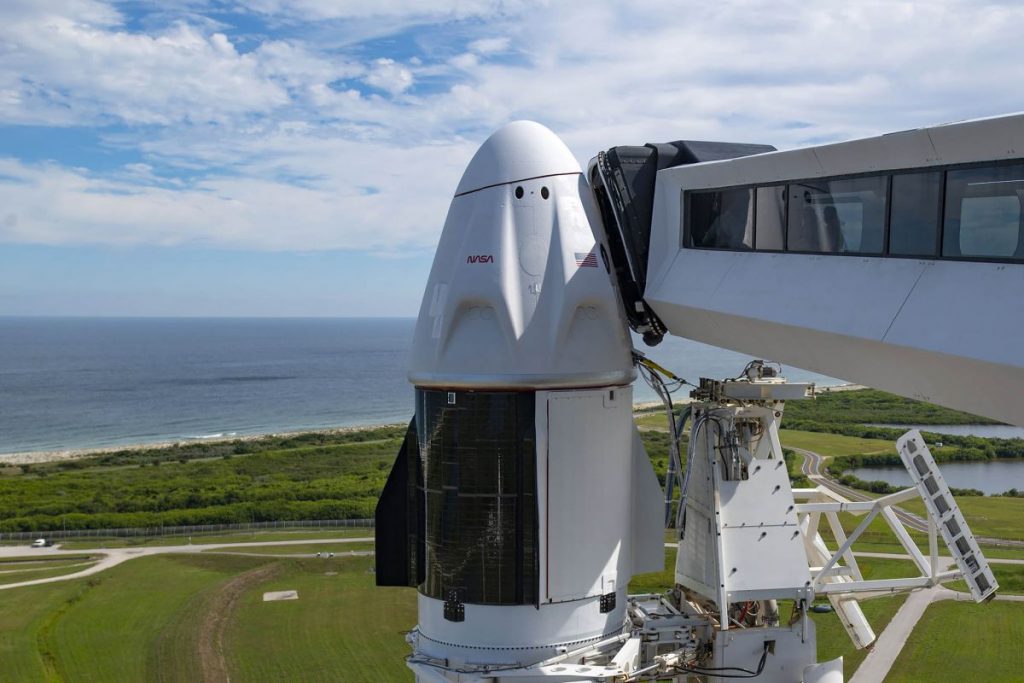SpaceX’s next Dragon passengers will need to wait a little longer to get off the ground.
SpaceX and NASA will launch Crew-5, their next crewed mission to the International Space Station, no earlier than Sept. 29, according to a NASA statement (opens in new tab) released on Thursday (July 21). The delay will see the mission slip behind the next launch of astronauts on a Russian Soyuz vehicle.
“A launch at the end of September will allow SpaceX to complete hardware processing and mission teams will continue to review the launch date based on the space station’s visiting spacecraft schedule,” NASA officials wrote.
In pictures: Amazing launch photos of SpaceX’s Crew-4 mission
Crew-5 includes NASA astronauts Nicole Mann and Josh Cassada, Japanese astronaut Koichi Wakata and Russian cosmonaut Anna Kikina.
The flight will be a crucial milestone for NASA, which has long argued in favor of “crew swaps” in which Russian cosmonauts fly on NASA’s commercially procured missions and NASA astronauts continue to ride on Russian Soyuz capsules.
After lengthy negotiations, NASA announced last week that Crew-5 will be the first SpaceX flight to carry a cosmonaut. NASA and the Russian space agency Roscosmos have also agreed that cosmonaut Andrei Fedyaev will fly on Crew-6, currently targeting launch in the spring. Meanwhile, NASA astronauts Frank Rubio and Loral O’Hara will each fly on Soyuz missions in the coming months.
The new schedule for Crew-5 means that the vehicles will be swapping launch slots as well as passengers.
The Crew-5 mission was previously aiming to arrive at the orbiting laboratory earlier in September. Under the new schedule, rather than Crew-5 replacing the currently orbiting Crew-4 astronauts before the next Soyuz launch, the Soyuz crews will turn over first. The launch of the next Soyuz and return of the current Soyuz crew is scheduled to occur between Sept. 16 and Sept. 30, according to NASA.
In addition to the schedule update, NASA and SpaceX also offered details about the rocket and capsule that will fly Crew-5.
The mission will use the Dragon capsule Endurance, which also carried Crew-3 for a November 2021 launch; the capsule returned to Earth from that flight in early May. Although SpaceX routinely reflies its hardware, NASA noted that this flight will mark a new milestone; it will be the first commercial crew flight to carry four veteran Draco engines to steer the capsule, with no new so-called forward bulkhead Draco engines. Teams are also switching out the capsule’s heat shield, parachutes and pod panels, according to the statement.
Endurance will launch atop a brand-new Falcon 9 booster, but mission personnel still have some issues to address on that end as well. The booster sustained some damage during the journey from the SpaceX production center in California to a test facility in Texas, according to the statement. Accordingly, the company is replacing both the interstage, which connects the first and second stages, and some instruments.
Both SpaceX and NASA are confident in the booster, which underwent a host of tests to ensure that there was no damage beyond the interstage segment; additional tests will also occur after all the replacements are complete, according to the statement.
Email Meghan Bartels at mbartels@space.com or follow her on Twitter @meghanbartels. Follow us on Twitter @Spacedotcom and on Facebook.

